Best Japandi Plants for a Minimalist and Serene Home
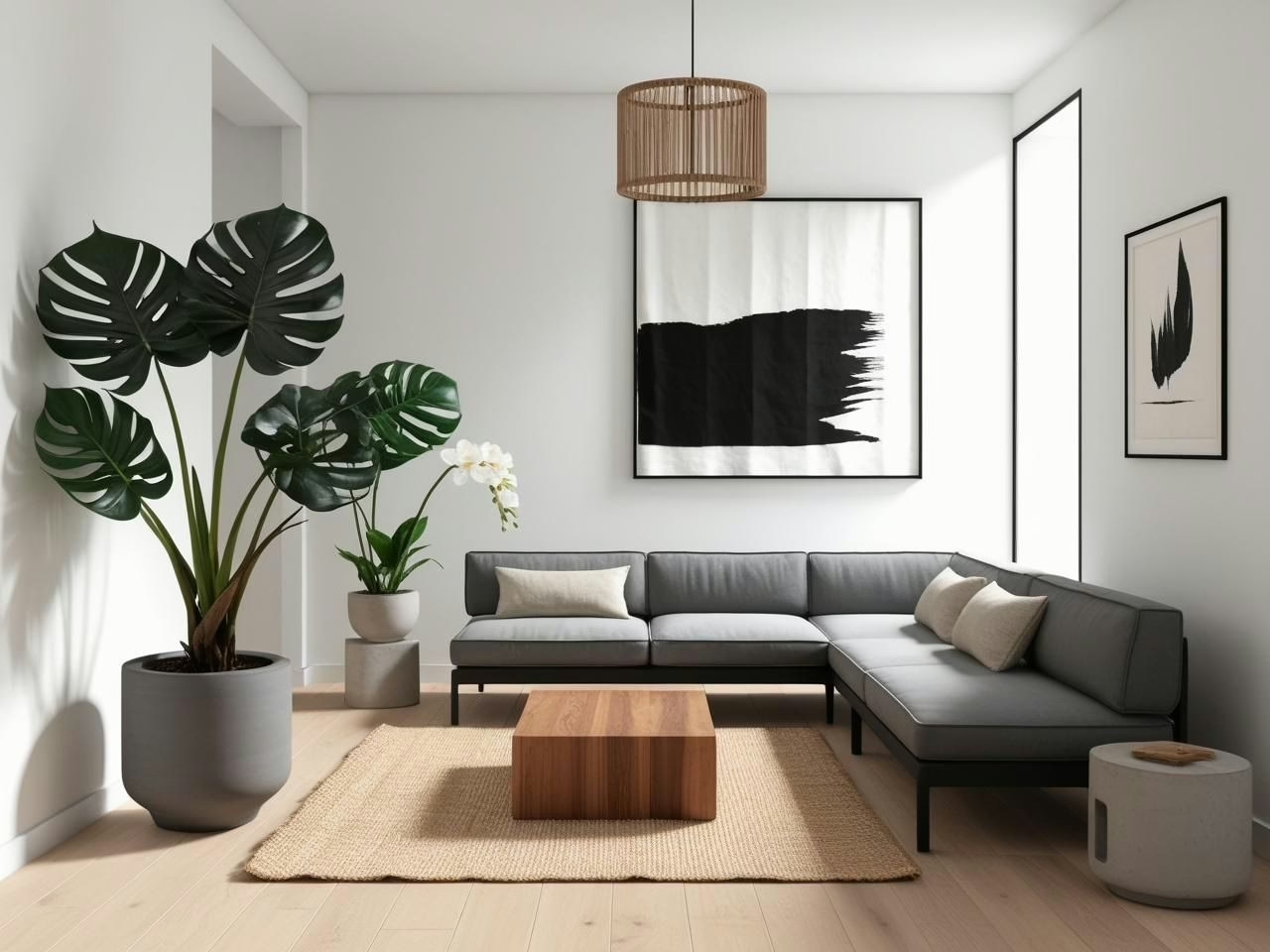
Let’s cut through the noise: Japandi isn’t just another fleeting design trend that your Pinterest algorithm decided you should care about. It’s the design world equivalent of that perfect relationship – where Japanese minimalism and Scandinavian functionality got together and created something that actually makes sense.
And plants? They’re not just the green accessories you panic-buy when your space feels too stark. In Japandi design, they’re main characters with important jobs to do.
Here’s the uncomfortable truth most design blogs won’t tell you: throwing any random houseplant into a neutral space doesn’t magically make it “Japandi.” That sad little succulent drowning in your bathroom? It’s not creating zen vibes – it’s silently begging for rescue.
The real power of Japandi plants comes from their ability to embody those perfect contradictions that make this style work: structured yet organic, minimal yet warm, curated yet seemingly effortless. They’re the living bridge between all those wooden elements and neutral tones that might otherwise feel like you’re living in an extremely tasteful furniture showroom.
I spent years collecting plants without any real strategy, ending up with what looked like a poorly managed botanical garden rather than a cohesive design statement. The Japandi approach was my plant intervention – teaching me that one perfect statement piece can create more impact than seventeen random green things fighting for attention.
Ready to transform your space from “has some plants” to “thoughtfully styled Japandi retreat“? Let’s dive into the plants that actually deserve a spot in your carefully curated home – and fair warning: some of your current green friends might not make the cut.
Your Shortcut to Effortless Japandi Style
12 refined color palettes & implementation strategies designed to bring warmth, texture, and harmony into your home.
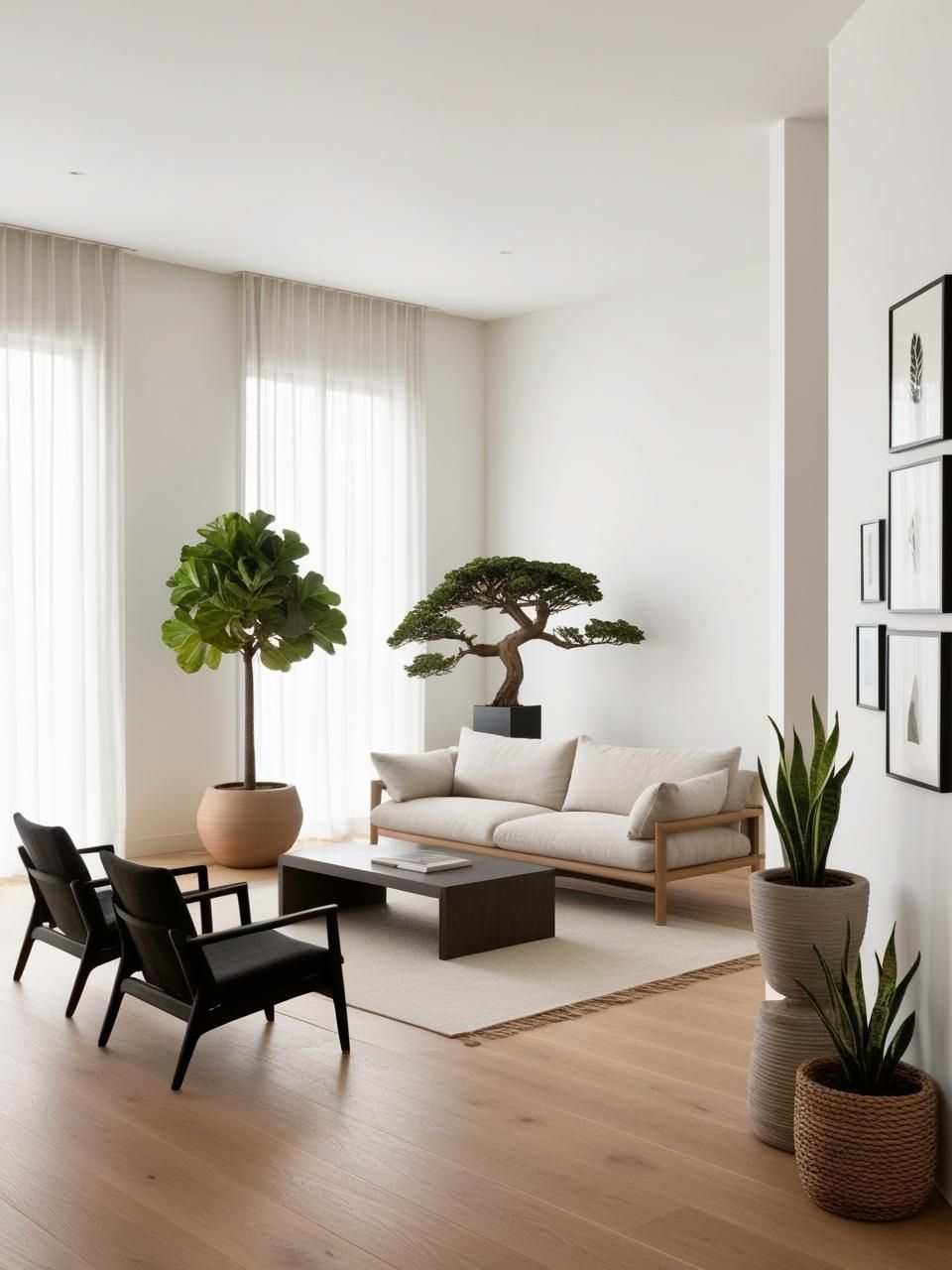
What Defines a Japandi Plant?
Let’s be honest – not all plants got the memo about the whole Japandi aesthetic. While some greenery naturally fits into this design marriage of Japanese minimalism and Scandinavian coziness, others are basically the equivalent of showing up to a zen meditation retreat wearing a neon Hawaiian shirt and ringing a cowbell.
The Plant Philosophy Behind the Trend
Japandi isn’t just another fleeting design fad that’ll make your Instagram posts look dated by next season. It’s a thoughtful blending of two design traditions that actually make sense together: Japanese minimalism (with its focus on intentionality) and Scandinavian functionality (with its warm practicality).
In this world, plants aren’t just decorative afterthoughts you panic-buy to fill empty corners. They’re deliberate elements that embody the core principles:
- Intentional simplicity – Think plants with clean silhouettes that don’t need constant attention (or daily therapy sessions)
- Quiet luxury – Plants that command respect without screaming for it
- Natural authenticity – Nothing plastic or pretending to be something it’s not (looking at you, fake fiddle leaf figs)
I spent years thinking more plants meant more design credibility – my living room looked like a poorly managed botanical garden. Then I discovered the Japandi approach and realized the power of restraint. One statement monstera can create more impact than seventeen random succulents fighting for attention on your windowsill. Trust me, your plants will thank you for the breathing room, and your space will suddenly make sense.
The Japandi Plant Personality Test
Not every plant passes the Japandi vibe check. The ones that do share some key characteristics that make them perfect companions for your carefully curated space:
- Architectural presence – Clean lines and structured growth patterns that create natural sculpture
- Restrained drama – Interesting without being the botanical equivalent of attention-seeking
- Unfussy demeanor – Low-maintenance needs that respect your time and sanity
Let’s talk about maintenance for a second, because that’s where many plant relationships go wrong. I once spent three months nurturing a finicky calathea that demanded distilled water, daily misting, and what felt like hourly affirmations just to keep its leaves from curling in existential despair. That’s not Japandi energy. That’s plant drama you don’t need in your serene space.
The beauty of Japandi-friendly plants isn’t just their looks – it’s their ability to thrive without turning you into their personal assistant. A snake plant standing tall in a simple ceramic pot doesn’t just look good; it quietly purifies your air without needing you to rearrange your schedule around its watering needs. That’s the kind of plant relationship worth investing in.
The Supporting Role in Your Design Story
Here’s where many Japandi enthusiasts miss the mark: thinking plants are just the finishing touch. In reality, they’re doing crucial heavy lifting in your space. They’re creating the bridge between all those wooden elements, neutral palettes, and natural textures.
A thoughtfully placed Japandi plant:
- Softens hard edges – Adding organic curves to those clean architectural lines
- Adds depth to neutrals – Breaking up those beige-on-beige expanses with living color
- Brings texture contrast – Offering something different from all that wood and linen
True story: I once witnessed someone spend more on a planter than the plant itself. This isn’t necessarily wrong in Japandi design – the vessel matters as much as what’s in it. That handcrafted ceramic pot with subtle texture? It’s having a conversation with your wooden coffee table, and they’re getting along beautifully.
The relationship between your plants and the rest of your Japandi elements should feel like a well-balanced conversation, not a competition. Your fiddle leaf fig shouldn’t be trying to outshine your carefully selected pendant light, and your wooden sideboard shouldn’t be competing with your ZZ plant for attention. When everything works together, the result is a space that feels intentionally designed but not overdesigned – the sweet spot we’re all aiming for.
The magic happens when everything feels intentional but not staged – like you somehow effortlessly created this perfect balance of nature and design without trying too hard. Of course, we know the truth: you absolutely tried hard, but the best Japandi spaces never reveal that secret.

Best Japandi Plants for a Minimalist Space
Let’s talk about the plant version of the “popular kids table” when it comes to Japandi design. These are the plants that effortlessly nail that sweet spot between sculptural beauty and not demanding a full-time plant nanny. Because nothing ruins minimalist serenity faster than a high-maintenance diva plant sending you guilt trips from the corner.
Fiddle Leaf Fig (Ficus lyrata)
The fiddle leaf fig is basically the supermodel of the plant world – tall, dramatic, with those perfectly shaped leaves that look like they’ve been art-directed. But let’s be honest: its reputation for being finicky is well-earned.
Mine spent the first three months in my apartment dropping leaves like passive-aggressive hints before finally deciding that yes, it could in fact survive in the corner by my east-facing window. The secret? Benign neglect. Water it when the soil is dry, rotate it occasionally so it grows evenly, and otherwise pretend you don’t care too much. Plants can smell desperation.
When it works, though? Pure magic. Those sculptural leaves create shadows that dance across your neutral walls, adding movement and depth to even the most restrained space. Just don’t panic when it drops a leaf – it’s not dying, it’s just being dramatic.

Snake Plant (Sansevieria)
If plants were people, the snake plant would be that effortlessly cool friend who somehow looks amazing in basic jeans and a t-shirt while everyone else is trying too hard. It’s architectural, striking, and basically impossible to kill unless you really commit to the task.
The vertical lines of a snake plant bring height and structure to your space without taking up precious square footage – perfect for small apartments where every inch counts. And unlike that fiddle leaf drama queen, this plant genuinely doesn’t need much from you. Water it occasionally, give it some indirect light, and it will quietly thrive while purifying your air.
I once forgot about my snake plant for nearly two months during a particularly chaotic work project. Not only did it survive, but it looked exactly the same as when I’d last paid attention to it. That’s the kind of low-maintenance relationship we all need more of.
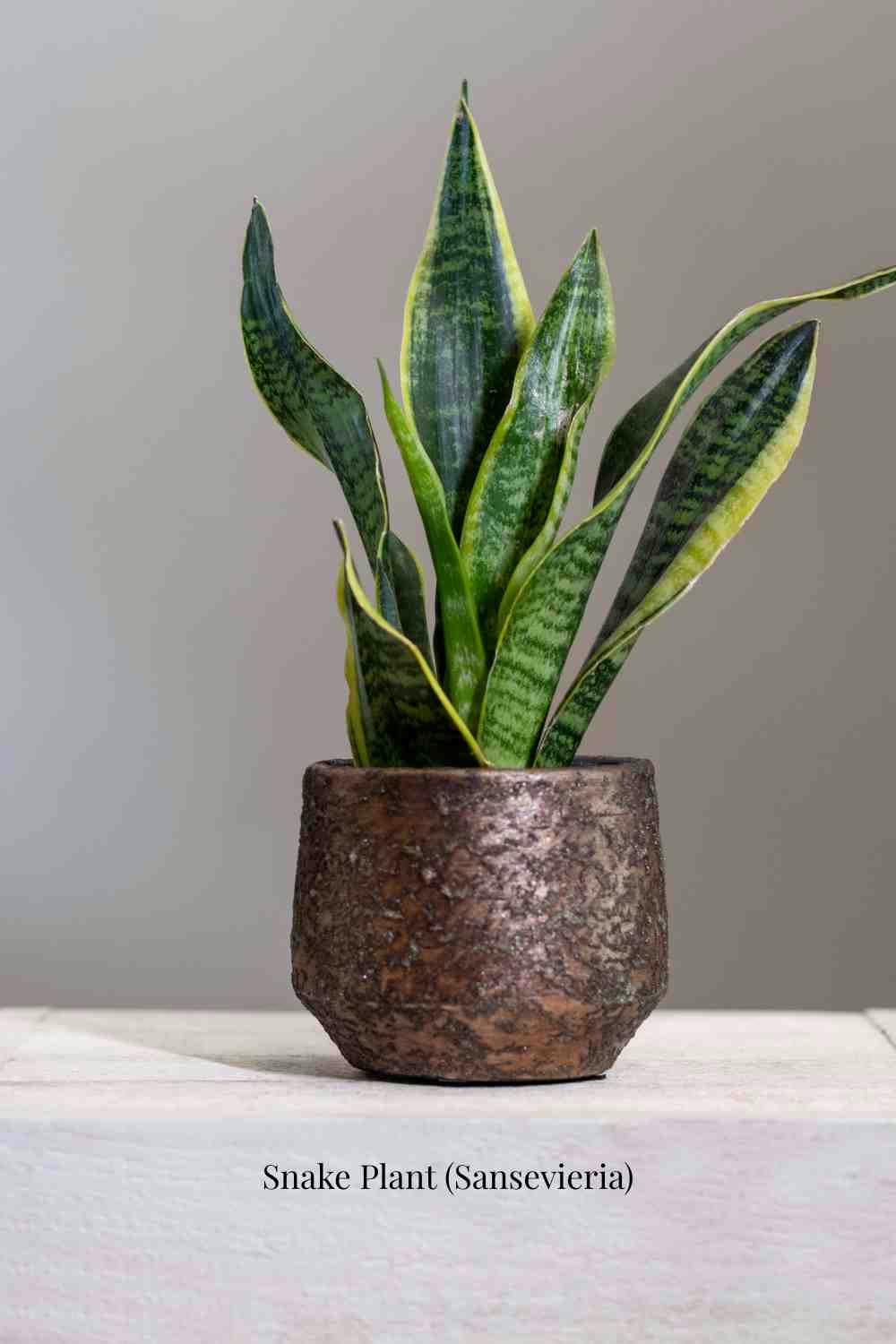
Monstera Deliciosa
The monstera walks a delicate line in Japandi design. Those iconic split leaves bring tropical energy that could easily veer into maximalist territory, but when placed thoughtfully in a simple ceramic pot? Pure Japandi perfection.
What makes monstera work is its naturally sculptural growth pattern. Each leaf is a study in negative space – those characteristic holes and splits create visual interest without busyness. It’s like nature’s own minimalist art piece.
Fair warning: a happy monstera will grow. And grow. And then grow some more. My first monstera started as a modest little plant and now dominates an entire corner of my living room, sending aerial roots into the atmosphere like it’s planning a takeover. Plan accordingly, and be prepared to prune occasionally to keep it within Japandi-appropriate bounds.
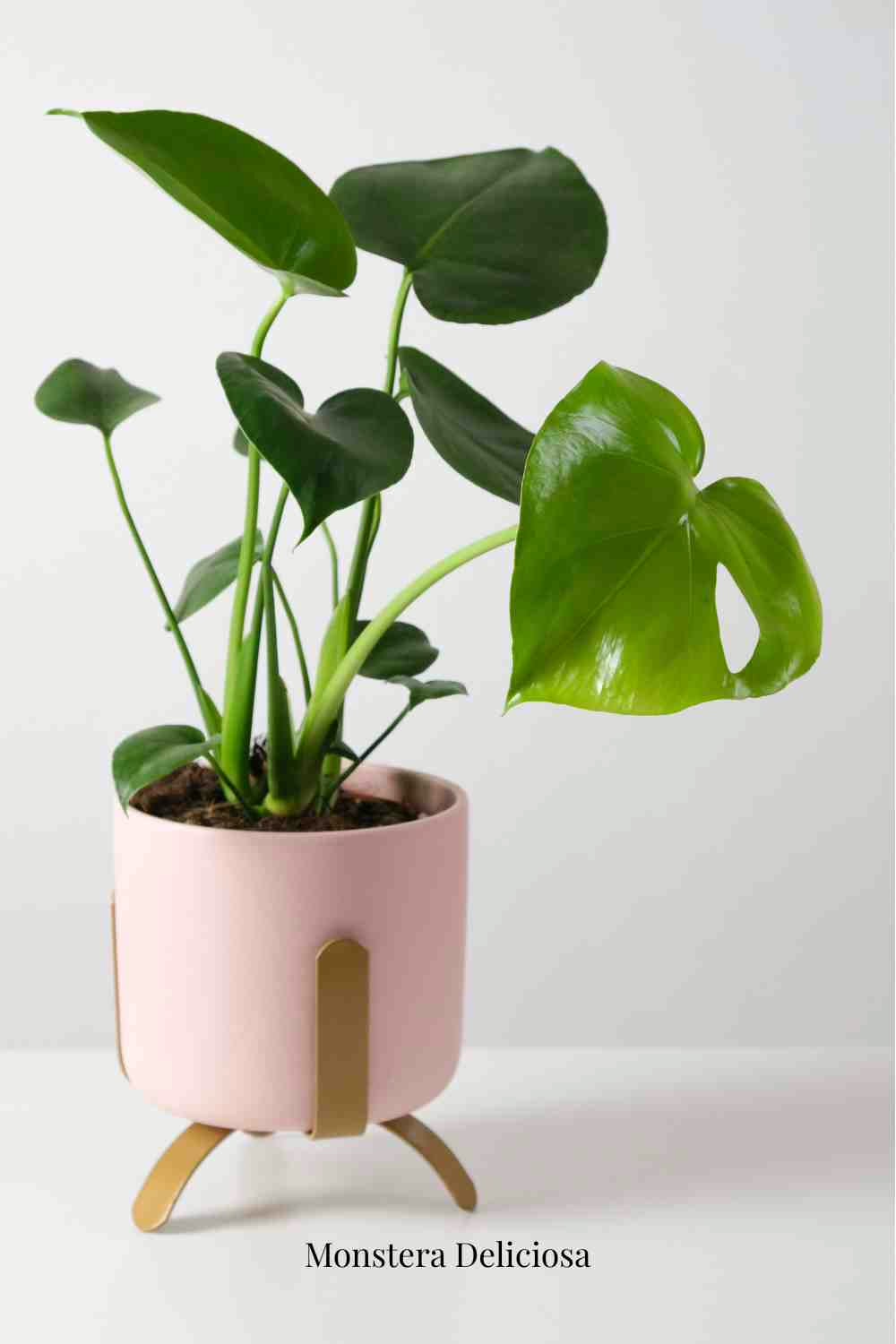
ZZ Plant (Zamioculcas zamiifolia)
If you’ve ever killed a succulent (and let’s be real, who hasn’t?), the ZZ plant is your redemption story. It’s practically indestructible, with glossy, dark green leaves that add depth and texture without demanding spotlight status.
The ZZ plant embodies Japandi principles in its very nature – it’s unfussy, architectural, and radiates a quiet confidence. It doesn’t need constant watering, thrives in low light, and somehow always looks like you just polished its leaves even when you definitely didn’t.
I’ve had the same ZZ plant for seven years. It’s moved apartments with me twice, survived a heating malfunction during a winter vacation, and still looks better than I do most mornings. That’s the kind of resilience your Japandi space deserves.
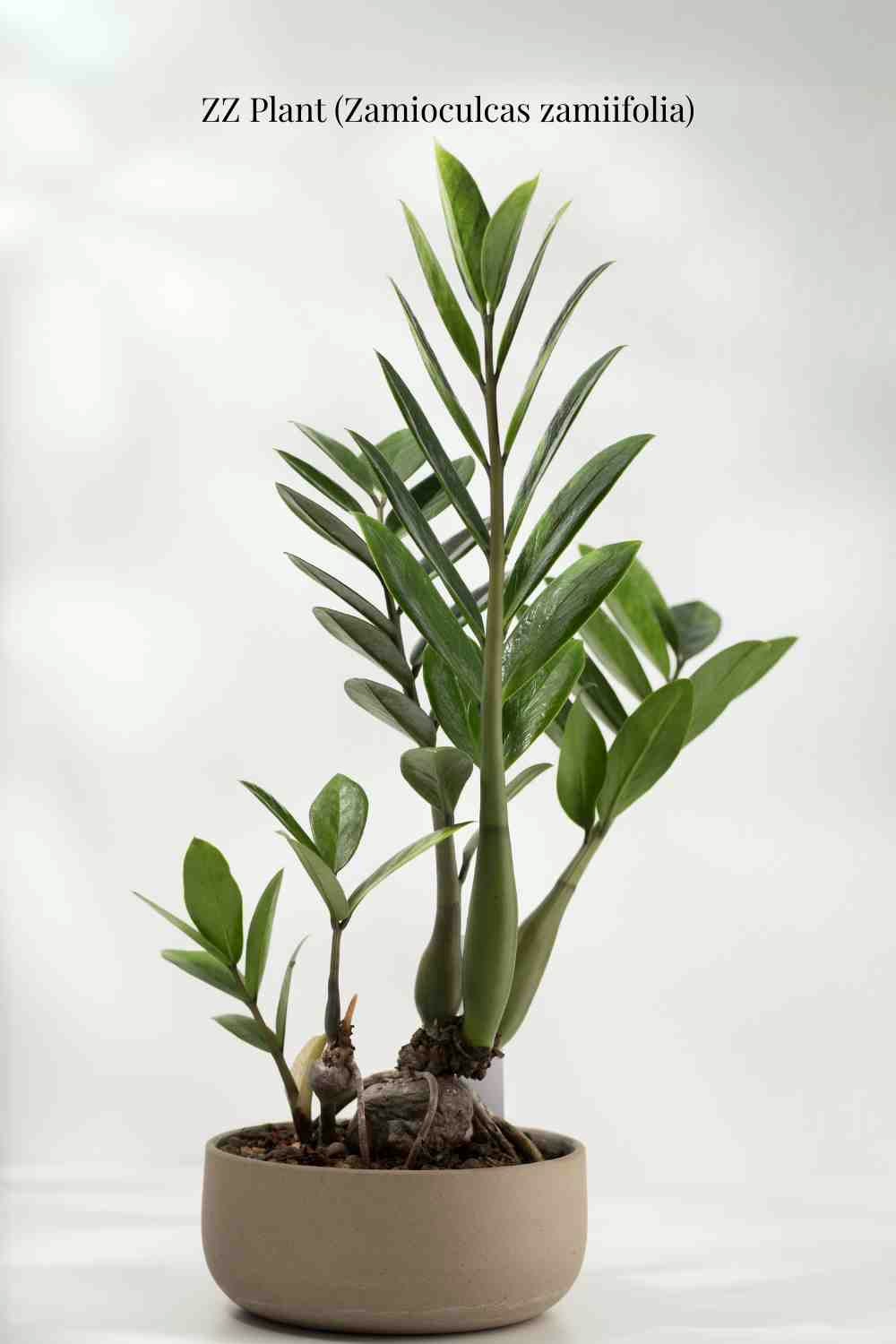
Bonsai Trees
Nothing says “I’m committed to this Japandi aesthetic” quite like a bonsai. These miniature trees aren’t just plants; they’re living sculptures that embody the Japanese concepts of patience and harmony.
But let’s be real: bonsais are not for the faint of heart or those lacking commitment. They require careful pruning, specific watering, and a level of attention that makes them more of a hobby than just a houseplant. My first bonsai lasted exactly three weeks before I realized I wasn’t ready for that level of plant parenthood.
If you’re up for the challenge, though, a well-maintained bonsai creates an instant focal point that grounds your space in authentic Japanese tradition. Just be honest with yourself about whether you’re ready for what is essentially the plant equivalent of adopting a high-maintenance pet.
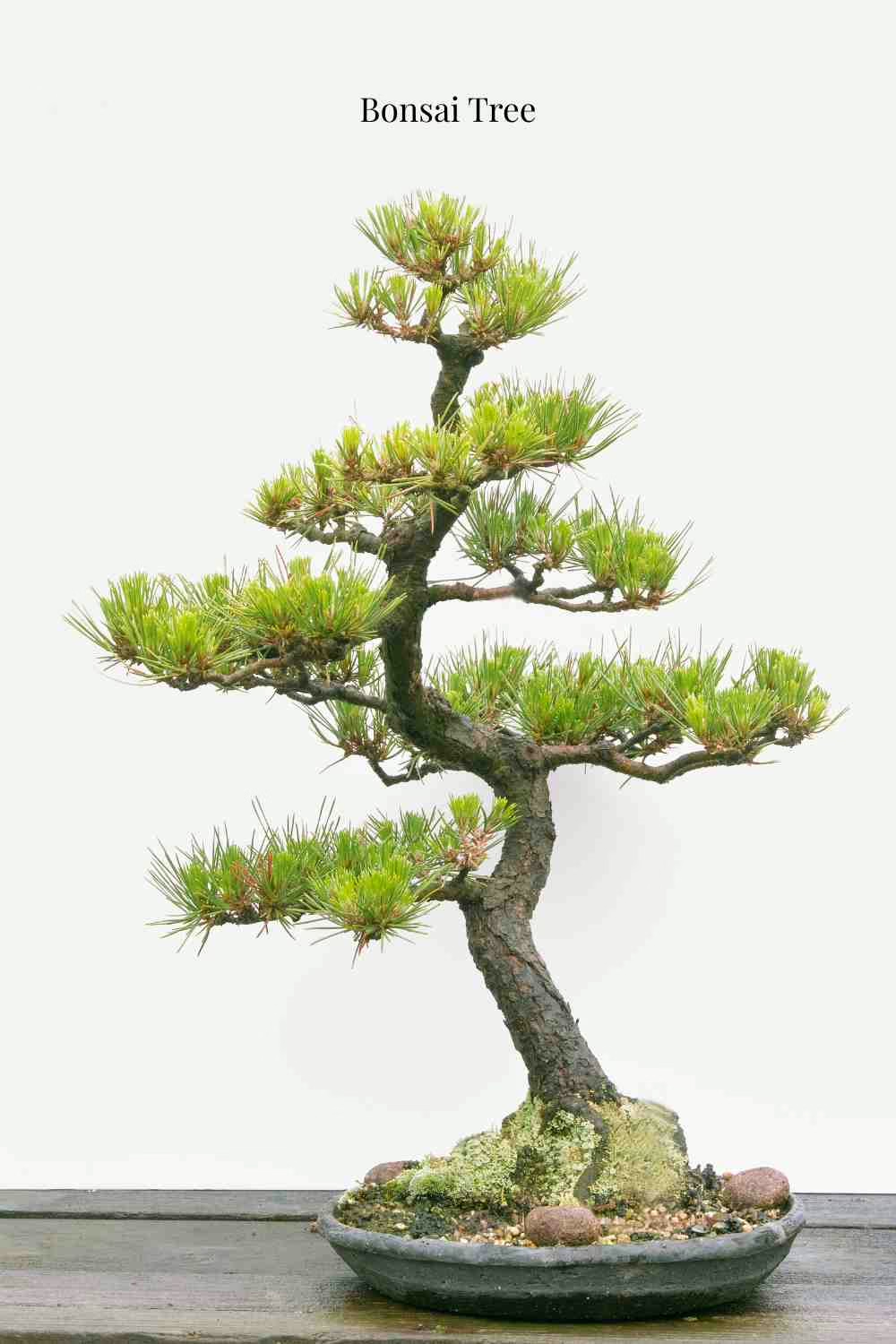
Pilea Peperomioides (Chinese Money Plant)
Despite its name, the Chinese money plant has become a Scandinavian design staple, making it the perfect representation of Japandi fusion. With its perfectly round leaves on delicate stems, it brings playful geometry to your space without overwhelming it.
What makes pilea special is its naturally balanced form – those coin-shaped leaves radiate from the center stem in an almost perfect pattern, creating a living sculpture that looks intentional without trying too hard. Plus, it regularly sprouts baby plants that you can separate and share with friends, which is about as hygge as plant propagation gets.
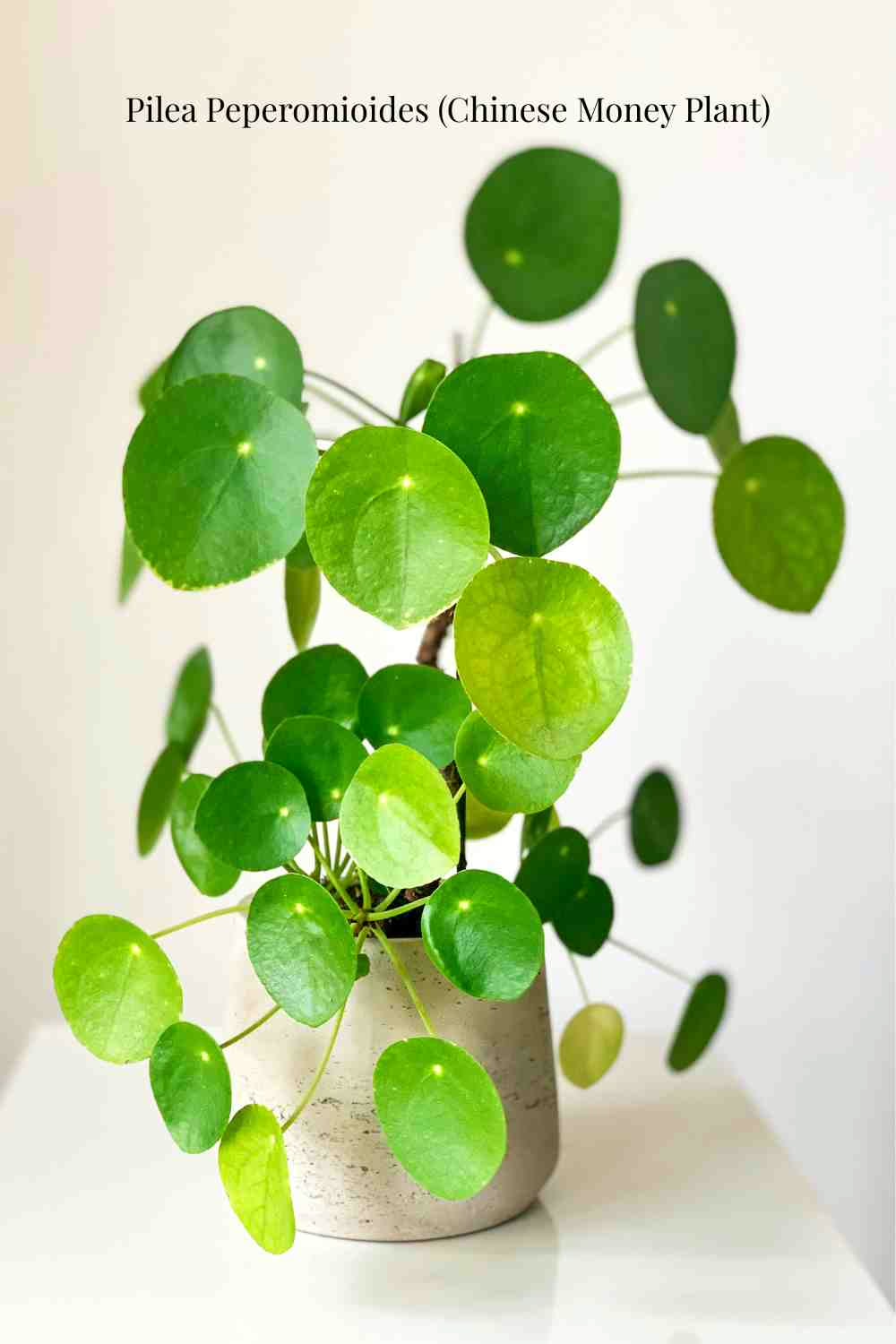
Olive Tree
An olive tree might seem like a Mediterranean outlier in the Japandi lineup, but it works surprisingly well. Its silvery-green leaves and gnarled trunk bring organic texture and a sense of age that balances the sometimes too-perfect newness of minimalist spaces.
In smaller spaces, a dwarf olive tree in a simple pot creates height and softness without overwhelming the room. The key is finding one with an interesting trunk formation – that natural sculpture embodies the wabi-sabi appreciation of imperfection that’s central to Japanese aesthetics.
Just don’t expect actual olives unless you’re providing Mediterranean-level sunlight. My olive tree has produced exactly zero olives in four years, but it’s still earned its place in my Japandi-inspired living room through sheer good looks alone.
Remember, the perfect Japandi plant isn’t just about aesthetics – it’s about finding that balance between visual impact and livability. Because even the most beautiful plant becomes decidedly un-Japandi when it’s dropping dead leaves all over your carefully curated space.

How to Style Japandi Plants in Your Home
Let’s talk about the sad reality of most plant styling: throwing a random fern into a basic pot and wondering why your space still looks like a college apartment instead of a design magazine spread. The thing is, plant styling is actually an art form, not just a hasty afterthought when you realize your room needs “something green.”
The Truth About Planters (That No One Wants to Admit)
The dirty secret of the Japandi world? The planter often matters more than the plant itself. I’ve seen a basic snake plant look like a design statement in the right container, and I’ve seen a rare monstera look like a sad airport plant in the wrong one.
Truth bomb: Your big box store glazed ceramic planters with those weird ribbed textures? They’re the equivalent of wearing Crocs to a wedding. They’ll technically do the job, but at what cost to your aesthetic dignity?
For true Japandi vibes, embrace:
- Matte ceramics in earthy tones – Think clay, oatmeal, and soft charcoal rather than glossy white
- Concrete planters with subtle texture – The uneven, imperfect finish is textbook wabi-sabi
- Natural fiber baskets – But not those aggressively bohemian ones with pompoms and tassels
The planter paradox: The best Japandi planters somehow look both perfectly crafted and casually imperfect at the same time. They should appear thoughtful but not try-hard, like you just happened to find this perfect artisanal ceramic piece while wandering through a Japanese market (even if you actually ordered it online during a 2AM insomnia shopping session).
I once spent more on a handcrafted ceramic planter than the actual fiddle leaf fig it houses. No regrets. That planter elevates the entire corner of my living room in a way no plant alone ever could.
Strategic Placement (Or: Stop Crowding Your Plants Like They’re on Public Transit)
The fastest way to ruin Japandi vibes? Plant crowding. Your greenery isn’t waiting to board the last train home – they need space to breathe and be appreciated as the living sculptures they are.
Real talk: Your plants are not a collective. They’re individuals with their own personalities and requirements. Treat them accordingly.
The plant placement commandments:
- Negative space is your friend – Each plant should have room to be seen in its entirety
- Consider sight lines – Plants should frame views, not block them
- Height variation creates rhythm – Mix floor plants, tabletop specimens, and hanging varieties
- Group in odd numbers – But only if they have enough space not to look cluttered
I had an epiphany about plant placement after removing three perfectly healthy plants from my living room and watching the space suddenly transform from “enthusiastic but confused plant collector” to “someone who actually understands design principles.” Sometimes less truly is more, especially when that “less” is thoughtfully positioned.
The Furniture-Plant Partnership (It’s Complicated)
Your plants and furniture should be in a healthy relationship, not competing for attention like reality show contestants. This partnership requires balance, compromise, and making sure neither one is doing all the heavy lifting.
Consider:
- Material contrast – Soft, organic plant forms against the clean lines of minimalist furniture
- Scale relationships – A substantial floor plant needs substantial furniture nearby
- Color story cohesion – Your plants’ natural green should complement, not fight with, your decor palette
I once watched a friend position and reposition a fiddle leaf fig beside various pieces of furniture for nearly an hour before finding the perfect spot. Excessive? Perhaps. But that’s exactly the level of consideration Japandi styling requires. The goal is to make it look effortless, even when it absolutely wasn’t.
Light Choreography (Yes, That’s a Thing)
Forget what you think you know about plant placement if it doesn’t involve considering how light interacts with your greenery throughout the day. Japandi styling isn’t static – it’s about creating moments as light shifts and creates different effects.
Strategic placement means:
- Positioning feathery plants like ferns where morning light will create shadow patterns
- Placing plants with glossy leaves where they’ll catch and reflect light into darker corners
- Using taller plants to softly filter harsh direct sunlight without blocking it entirely
My olive tree, positioned near a west-facing window, creates the most extraordinary dappled light patterns across my dining table in the late afternoon. That’s not an accident – it’s light choreography, and it’s what separates amateur plant parents from plant stylists.
The essence of Japandi plant styling isn’t just making your space look good in photos – it’s creating a living environment that shifts, breathes, and reveals different aspects of beauty throughout the day. Your plants aren’t decorative objects; they’re dynamic elements in an evolving design conversation.
And if anyone tells you they got their perfect Japandi plant styling right on the first try, they’re either lying or they hired a professional. The rest of us mere mortals will be over here, moving our monstera six inches to the left for the fifth time today.
Your Shortcut to Effortless Organic Modern Style
12 refined color palettes designed to bring warmth, texture, and harmony into your home.
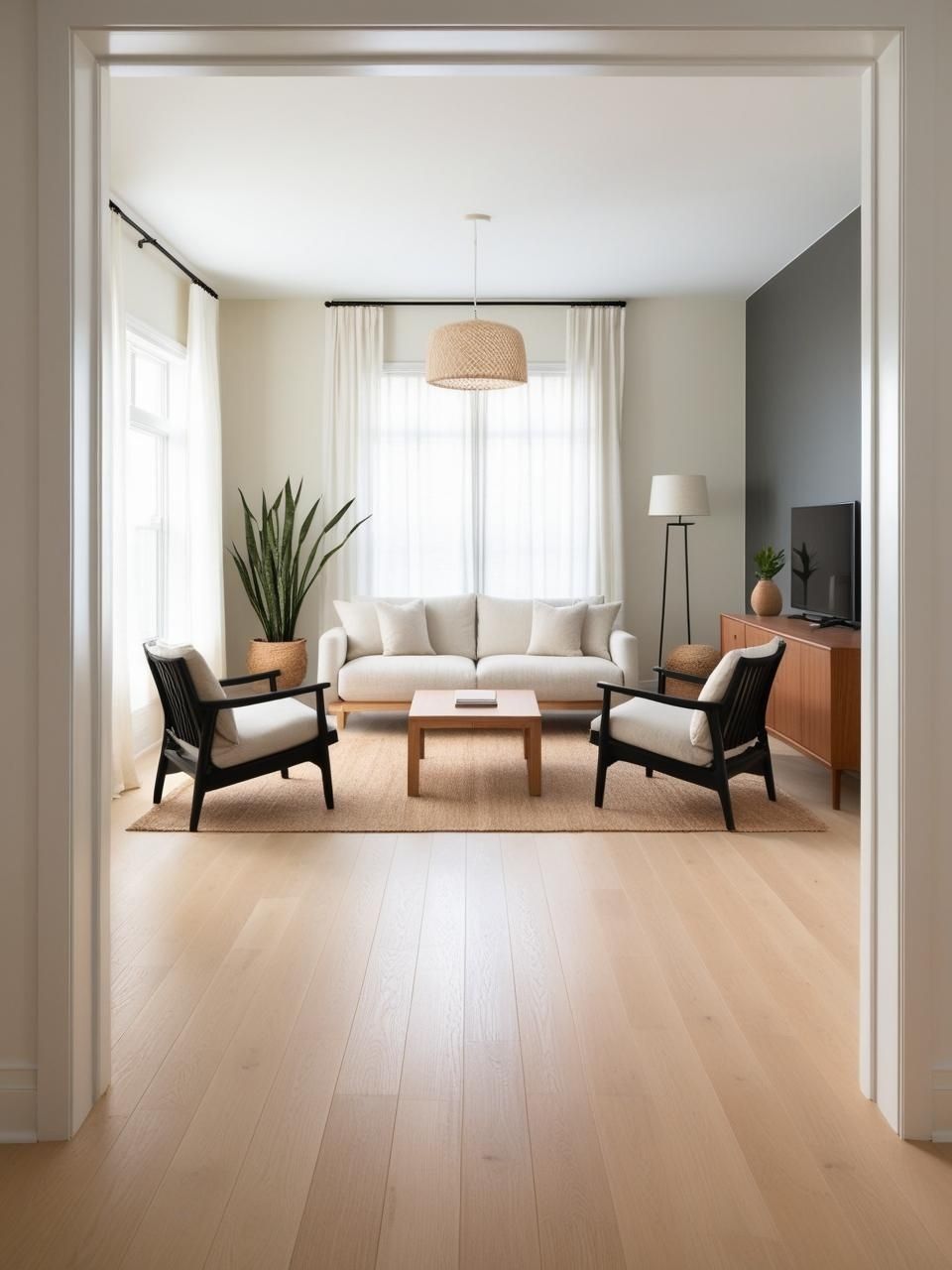
Japandi Plant Care Tips for a Long-Lasting Green Space
Let’s start with a truth bomb: that perfectly styled Japandi plant corner you’re drooling over on Instagram? It’s probably being maintained by someone who talks to their plants more than to their actual human friends. But here’s the good news – you don’t need to become a plant whisperer to keep your Japandi greenery thriving. You just need to stop making the basic mistakes that are turning your serene sanctuary into a botanical hospice.
Watering Without the Drama
The number one way people murder their carefully selected Japandi plants? Drowning them with love. That daily misting ritual you’ve adopted? It’s the plant equivalent of helicopter parenting, and it’s not doing anyone any favors.
Here’s the uncomfortable truth: most Japandi-friendly plants prefer neglect to obsession. That ZZ plant doesn’t need you hovering around it with a spray bottle making cooing noises. It needs you to back off and let it live its best life.
The Watering Reality Check:
- Your plants aren’t children – they don’t need daily attention
- Overwatering kills more plants than underwatering (this is science, not opinion)
- That moisture meter you bought is probably collecting dust, but it shouldn’t be
Let me share a personal revelation that transformed my plant game: I started dating all my plant waterings on a calendar. Not sexy, definitely not Instagram-worthy, but it works. My fiddle leaf fig went from dropping passive-aggressive leaves to actually growing new ones once I stopped “checking if it was thirsty” every other day.
For true Japandi plant harmony, water deeply but infrequently. Your monstera doesn’t want a daily sip – it wants a proper drink when it’s actually thirsty. Learn to read your plants’ signals instead of following some arbitrary watering schedule you found online from someone who lives in a completely different climate.
Soil Secrets Nobody Talks About
Let’s discuss the dirty truth: that generic potting soil from the garden center is the equivalent of feeding your plants fast food for every meal. It’ll keep them alive, sure, but thriving? That’s a stretch.
Most Japandi-style plants need:
- Well-draining soil that doesn’t stay soggy (wet feet = sad plants)
- A mix that includes perlite, bark, or pumice for aeration
- Occasional soil refreshment without full repotting drama
The biggest soil mistake I see? People treating all plants like they have identical needs. Your snake plant and your fiddle leaf fig are not soil siblings – they have different preferences, and respecting those differences is key to maintaining that effortless-looking Japandi aesthetic.
I once spent an entire Saturday mixing custom soil blends for different plants, much to the concern of my partner who thought I’d finally lost my mind. Excessive? Perhaps. But my plants have never looked better, and I haven’t lost one to root rot since.
Pruning: The Art of Gentle Discipline
Here’s where most amateur plant parents fail spectacularly: letting their plants grow wild while still expecting them to maintain that perfect Japandi silhouette. That’s like expecting a toddler with scissors to give themselves a perfect haircut – it’s not happening without some intervention.
Pruning isn’t plant punishment – it’s plant guidance. And in Japandi styling, strategic pruning is the difference between “intentional design element” and “overgrown mess that happens to be in a nice pot.”
The Pruning Principles:
- Remove yellowing or damaged leaves immediately (they’re just distracting from the good parts)
- Shape plants to enhance their natural form, not fight against it
- Use clean, sharp tools (those kitchen scissors? Not ideal)
- Be decisive but conservative – you can always cut more later
I once watched a friend agonize over cutting a single leaf from their monstera for twenty minutes, like they were performing delicate surgery. Meanwhile, I’ve learned that confident, deliberate pruning is what keeps my plants looking like they belong in a design magazine rather than a jungle documentary.
Creating the Right Environment (Without Building a Greenhouse)
The final frontier of Japandi plant care: creating an environment where your plants can thrive without turning your home into a tropical rainforest simulation.
The Environmental Truth:
- Most homes are too dry, not too humid, for plants
- Grouping plants creates a microclimate they all benefit from
- Light is food – skimping on it is like putting your plants on a starvation diet
Here’s a revelation that changed my plant game: I stopped trying to adapt my plants to my environment and started choosing plants that naturally thrive in my actual home conditions. Revolutionary, I know.
Instead of fighting to keep a tropical plant alive in my dry apartment with mediocre light, I embraced plants that actually want to live there. My olive tree and snake plants thrive in the dry air that would make a calathea crumple in protest. That’s not settling – that’s smart Japandi plant selection.
The most sustainable Japandi plant space isn’t created through elaborate humidifiers, grow lights, and daily misting routines. It comes from the radical act of choosing plants that actually match your real living conditions, not the fantasy terrarium environment you wish you had.
Remember, the essence of Japandi isn’t just aesthetic – it’s philosophical. It’s about finding harmony between beauty and function, form and practicality. Your plants should enhance your life, not complicate it with high-maintenance demands that leave you both stressed out.
And if you’ve killed a few plants on your journey to Japandi perfection? Welcome to the club. We don’t talk about the ferns that didn’t make it.
Unlock Designer-Perfect Colors in Minutes
Browse my curated collection of interior color palettes—tailored for today’s most loved design styles.
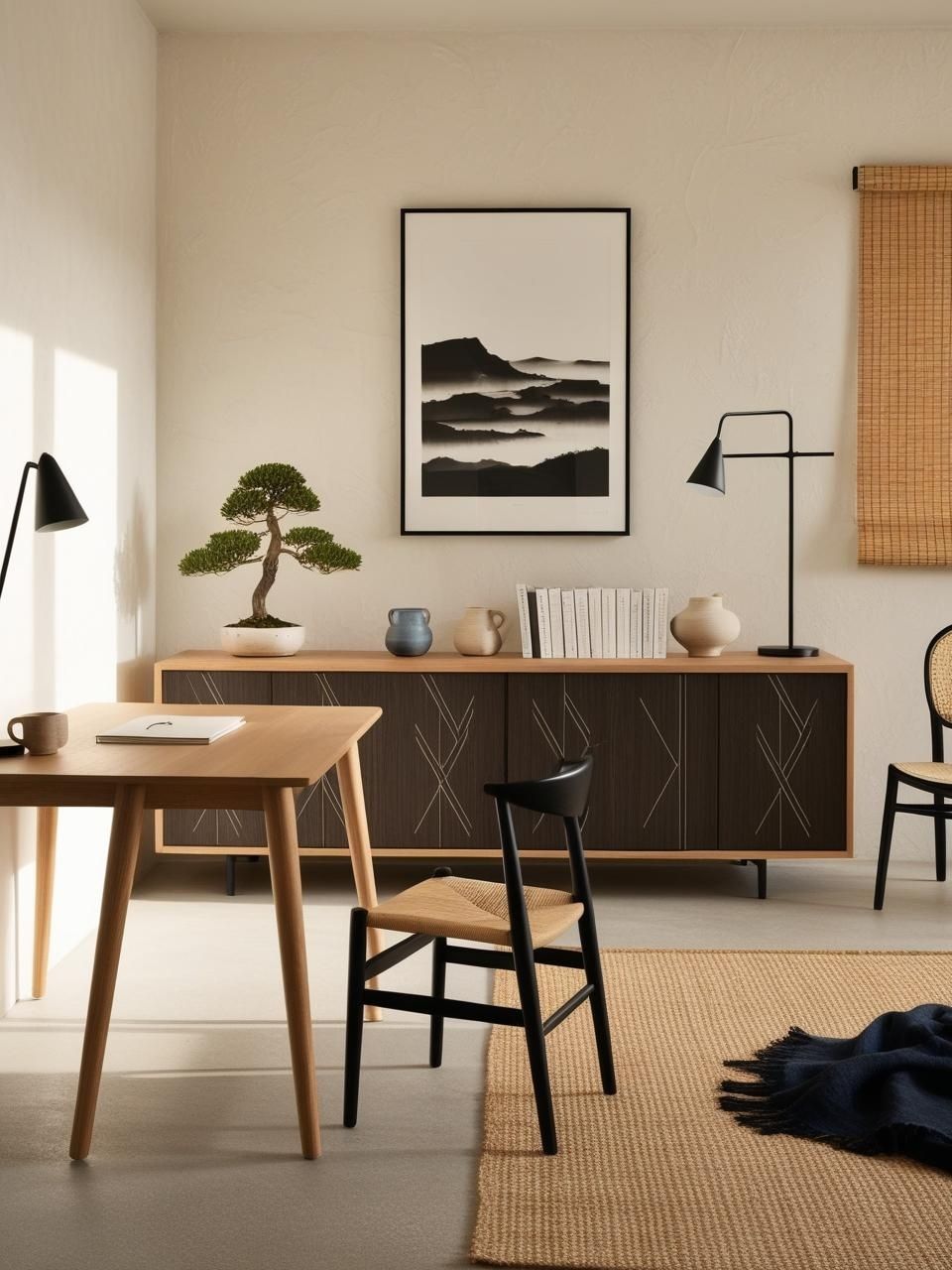
Where to Buy Japandi Plants and Accessories
Let’s address the elephant in the room: not all plant shops are created equal. That big box garden center with the sad, overwatered plants under fluorescent lighting? It’s the design equivalent of getting your wedding outfit at a gas station convenience store. Technically possible, but why would you do that to yourself?
The Plant Shop Truth Bomb
Let’s get brutally honest about where to source plants that don’t look like they’ve already given up on life before they even reach your home. The dirty secret? The best Japandi plants rarely come from places with “garden” in their name.
Online Plant Shops That Won’t Disappoint You
- Bloomscape – Their plants arrive looking like they’ve been styled for a photoshoot, not traumatized in transit
- The Sill – Yes, everyone and their design-conscious cousin shops here. There’s a reason.
- Terrain – For when you want plants that look like they came from that cool Japanese nursery no one knows about
- Rooted – They understand that packaging matters almost as much as the plant itself
Here’s the real talk you won’t hear elsewhere: paying more for a healthier, better-grown plant is actually cheaper in the long run than buying the budget option and replacing it three times when it inevitably dies. That $15 fiddle leaf fig from the discount store? It’s the fast fashion of the plant world – not built to last.
I once ordered a monstera from a generic online retailer to save money, and what arrived looked like it had hitchhiked to my house through a hurricane. Lesson learned. Quality plants from reputable sellers aren’t just prettier – they’re survivors.
Planter Politics (Yes, It’s a Thing)
Let’s talk about those mass-produced ceramic planters with the weird glazes that somehow manage to clash with everything in your carefully curated space. They’re the equivalent of wearing socks with sandals – functional but aesthetically questionable.
Sustainable Planter Brands That Actually Get It
- Bloomingville – Scandinavian simplicity without trying too hard
- Yield Design – Their ceramic planters somehow look both modern and timeless
- Bergs Potter – Danish-designed, Italian-made planters that elevate whatever you put in them
- Wally Planters – For those minimal wall-mounted moments that make people ask where you got them
The uncomfortable truth about planters: that $8 ceramic pot is probably made with questionable labor practices and will crack within a season. Meanwhile, that $45 artisanal planter you’re hemming and hawing over? It’ll still be looking perfect when your grandkids inherit it.
My design revelation came when I stopped seeing planters as disposable containers and started treating them as investment pieces. That handcrafted stoneware planter I splurged on five years ago still gets compliments, while the budget-friendly alternatives have long since been relegated to the gardening shed (or let’s be real, the trash).
DIY Without the Pinterest Fails
We’ve all seen those DIY planter projects that look like a kindergarten craft project gone wrong. But there’s a middle ground between “sad painted yogurt container” and “professional ceramicist level creation” that’s actually achievable.
Repurposing Ideas That Don’t Scream “I’m Trying Too Hard”
- Vintage ceramic vessels – That thrifted stoneware pitcher with the perfect patina? Plant it up.
- Wooden boxes – Line with plastic, add drainage, instant wabi-sabi charm
- Concrete casting – Easier than it sounds, and the results are surprisingly professional
- Basket transformation – Line natural baskets with plastic for an instant textural element
Here’s the DIY reality check: not every container needs to become a planter. That antique champagne bucket might look cool on Pinterest with a fern stuffed in it, but in real life? It’s probably leaking onto your hardwood floors while the plant slowly dies from lack of drainage.
My most successful DIY planter wasn’t actually a “project” at all – just a perfectly weathered concrete bowl from a flea market that I drilled a drainage hole into. It took 10 minutes, cost $12, and looks like it came from a high-end design store. Sometimes the best DIY is the one that requires the least actual DIY-ing.
The Secret Plant Accessory Source
The final frontier of Japandi plant styling isn’t actually the plants or even the planters – it’s the supporting cast of accessories that elevate the whole scene from “I have houseplants” to “I understand design principles.”
- Japanese pruning shears that are so beautiful you’ll display them rather than hide them in a drawer
- Handcrafted watering cans that double as sculptural objects
- Natural fiber plant mats that protect surfaces while adding textural interest
- Wooden plant stands that create height variation without looking like generic wire shelving
I once watched a friend transform her entire plant display by simply adding three wooden plant stands at varying heights. That’s it. No new plants, no fancy planters – just thoughtful elevation that created visual rhythm where before there was just a cluster of pots on the floor.
The real secret to successful Japandi plant styling isn’t endless shopping – it’s thoughtful curation. Each element should earn its place, serve a purpose, and contribute to the whole aesthetic rather than competing for attention.
Remember, there’s a fine line between “curated plant collection” and “botanical hoarding problem.” Your Japandi plant space should feel intentional, not like you’re running an unlicensed nursery out of your living room.
Curated Wall Art for Elegant Homes
Bring softness, texture, and intention into your home with digital wall art inspired by wabi-sabi, abstract forms, and muted watercolors. Every piece is crafted to create stillness and beauty—whether you’re styling a gallery wall or a minimalist nook.
Conclusion
So here we are, at the end of our Japandi plant journey. Let’s recap what we’ve learned without sounding like we’re writing the world’s most boring plant book summary.
The Japandi plant approach isn’t rocket science, but it does require something many of us lack: restraint. That urge to buy every cute plant you see at the nursery? That’s the exact opposite of what we’re going for here. Think of it as plant dating – be selective, choose quality over quantity, and don’t bring home everything that catches your eye after a couple of drinks.
Remember that the magic of Japandi styling happens in the tension between opposites: organic plants against clean architectural lines, perfect ceramic vessels housing naturally imperfect foliage, minimalist aesthetics that somehow manage to feel warm and inviting rather than cold and stark.
The hard truth? Most people get Japandi plants wrong not because they choose the wrong varieties, but because they’re unwilling to edit. That corner with seventeen different plants crammed together? That’s not Japandi – that’s a cry for help. One perfect statement plant in a thoughtfully chosen vessel will create more impact than your entire overgrown collection.
I spent years thinking more plants meant more design credibility, only to discover that the most sophisticated plant stylists often have fewer, better specimens. It was a humbling realization that involved donating several perfectly healthy plants to friends because they were cluttering my space rather than enhancing it.
The final reality check: perfect Japandi plant styling isn’t a destination, it’s an ongoing conversation between you, your space, and your plants. Those magazine-worthy plant corners don’t happen overnight. They evolve through trial, error, and occasionally talking to your fiddle leaf fig in a slightly threatening tone when it starts dropping leaves for no apparent reason.
So go forth with your newfound Japandi plant wisdom. Choose thoughtfully, style deliberately, maintain consistently. And when you inevitably kill a plant or two along the way? Consider it a design learning experience rather than a failure. After all, even the most perfectly styled Japandi space has room for growth.